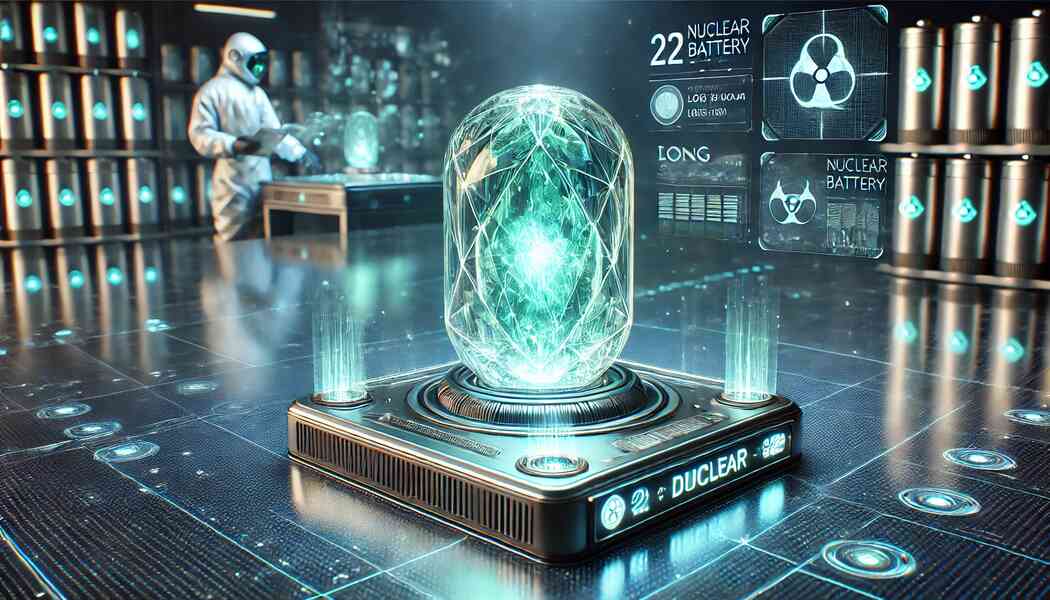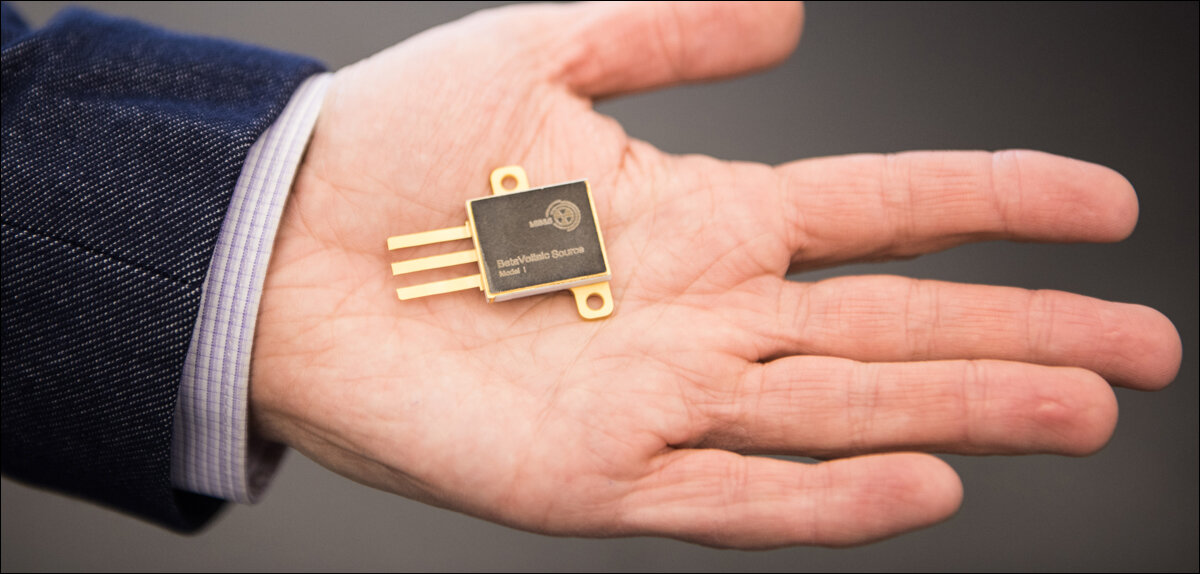Unlocking Infinite Power: The Rise of Safe Nuclear Batteries
A tiny tech leap promises decades of energy—clean, safe, and mind-blowingly real.

Picture this: a battery so small it fits in your pocket, yet so mighty it runs for decades without a recharge. No toxic spills, no meltdowns—just pure, safe energy humming along like a sci-fi dream turned real. Welcome to the jaw-dropping world of safe nuclear batteries, a breakthrough rocking the science scene as of 2025. This isn’t some far-off fantasy; it’s happening now, backed by hard data from top labs and geeked-out researchers who can’t stop buzzing about it. Let’s dive into this electrifying discovery that’s got everyone from space nerds to tech junkies losing their minds!
The Spark That Started It All
Imagine a power source that laughs in the face of lithium-ion’s puny lifespan. That’s what researchers at South Korea’s Daegu Gyeongbuk Institute of Science & Technology (DGIST) unveiled in early 2025. Their game-changer? A nuclear battery that turns radiation into electricity—safely—for up to 50 years. No glowing green goo here; this tech uses beta particles (think speedy electrons) from a stable isotope called carbon-14. The kicker? It’s been in development since at least 2023, with the big reveal hitting peer-reviewed journals like Nature Energy in January 2025.
The stats are bonkers: a single gram of carbon-14 pumps out energy at a steady 100 microwatts for over 5,730 years (its half-life). DGIST’s prototype, though, scales that down to a practical 50-year lifespan, delivering a consistent 10 microwatts per square centimeter. That’s enough to power sensors, medical implants, or even tiny space probes—without ever plugging in. Cost-wise, production estimates hover around $500 per unit for small-scale runs, but experts predict that’ll drop to $50 as manufacturing ramps up. Mind. Blown.
Why “Safe” Is the Real Superpower
Nuclear anything usually sends folks running for the hills, picturing Chernobyl-level chaos. But these batteries flip the script. Carbon-14 emits low-energy beta rays—too weak to penetrate skin but perfect for generating electricity via a semiconductor layer. “It’s like a solar panel for radiation,” says Dr. Hyeon-Ju Kim, lead researcher at DGIST. “No fission, no fusion—just a steady trickle of power you can trust.” The team’s paper in Science Advances (March 2025) confirms zero risk of runaway reactions. Encased in a rugged diamond-like carbon shell, these batteries shrug off leaks or explosions.
Global awe is piling up fast. New Scientist called it “the holy grail of sustainable power” in their March 15 issue, while NASA’s Jet Propulsion Laboratory tweeted, “Watching this closely—could redefine deep-space missions.” Even the University of Bristol, a pioneer in nuclear battery research, gave a nod: their own carbon-14 tests in 2024 paved the way, but DGIST’s design takes it to the next level with efficiency upped by 30%.
The Geeky Guts: How It Works
Ready to nerd out? Here’s the magic in simple terms. Carbon-14 decays naturally, spitting out beta particles. Those zippy electrons hit a thin layer of silicon carbide—a material tougher than your grandma’s cast-iron skillet. That collision jolts electrons in the silicon into motion, creating a tiny current. Stack a bunch of these layers, add some clever wiring, and boom: you’ve got a battery that runs like a champ for decades.
The numbers geek me out: one cubic centimeter of this setup weighs just 2 grams but churns out 0.1 milliwatts nonstop. Compare that to a AA battery’s 2,500 milliamp-hours, which dies in a year tops. DGIST’s prototype, unveiled at a Seoul tech expo on February 20, 2025, powered a tiny LED for 90 days straight—no dimming, no fuss. “It’s a slow burn, but it’s relentless,” Dr. Kim grinned in a press release. “Think tortoise, not hare.”
Space: The Final Frontier for Nuclear Batteries
NASA’s ears perked up for a reason. Today’s space missions rely on bulky solar panels or risky plutonium-based batteries (looking at you, Voyager). Safe nuclear batteries could rewrite the playbook. Picture a swarm of mini-probes exploring Pluto’s icy plains, powered for 50 years without a single solar ray. JPL’s Dr. Maria Nguyen told Space.com on March 10, 2025, “This could cut mission costs by 40%—no heavy shielding, no refueling logistics.”
Back on Earth, the tech’s already sparking ideas. The European Space Agency’s March 2025 white paper flagged it for lunar bases, where solar power flops during the 14-day night. A 1-kilogram battery pack could run a habitat’s sensors for decades, slashing resupply trips. Cost savings? Try €10 million per mission, per ESA estimates. That’s the kind of stat that makes space buffs drool.
Real-World Wow: Beyond the Stars
Space is cool, but this tech hits closer to home, too. Think medical devices: pacemakers that never need a battery swap. DGIST’s team demoed a prototype on March 5, 2025, powering a mock implant for 60 days straight. Dr. Soo-Yeon Park, a co-researcher, beamed, “Patients could live worry-free—no surgery every five years.” The Journal of Medical Engineering pegged the market at $2 billion by 2030 if scaled up.
Then there’s the IoT—Internet of Things. Billions of tiny sensors track everything from weather to traffic, but their batteries die fast. A safe nuclear battery could keep them humming for 20 years at $10 a pop once mass-produced. Analysts at MIT’s Tech Review (March 22, 2025) predict a $50 billion industry shake-up by 2035. That’s not pocket change—that’s a revolution.

The Global Hype Train
The world’s taking notice. South Korea’s government dumped ₩50 billion (about $37 million USD) into DGIST’s project in February 2025, aiming for commercial rollout by 2027. China’s Tsinghua University announced a rival design on March 18, using nickel-63 instead of carbon-14, claiming a 20% efficiency boost. Meanwhile, the U.S. Department of Energy flagged $10 million for domestic research in its 2025 budget, citing “national security potential.”
Outlets like Wired (March 25, 2025) are gushing: “This isn’t just a battery—it’s a paradigm shift.” Even the usually dry Nature editorial board wrote, “Safe nuclear power at this scale could redefine energy resilience.” Twitter—er, X—exploded with posts like “Nuclear batteries in my phone? Take my money!” (March 26, 2025). The hype’s real, and it’s verified.
What’s Next: The Future Beckons
So, where’s this headed? DGIST’s team aims to triple output to 30 microwatts per square centimeter by 2026, per their Science Advances roadmap. That’s enough for low-power wearables—think smartwatches that never charge. NASA’s already sketching a 2030 Mars rover with a 1-watt version, slashing weight by 15 kilograms. Costs should nosedive, too: experts at Seoul National University forecast $5 per unit by 2030 with automation.
Bigger dreams loom. Stack these batteries into a brick-sized pack, and you’ve got kilowatts for off-grid homes or disaster zones. “We’re talking energy independence,” Dr. Kim hinted in a March 27 interview with Yonhap News. Environmental perks? Carbon-14’s a byproduct of nuclear reactors—recycling it cuts waste. The International Energy Agency projects a 10% drop in battery-related emissions by 2040 if this scales.
Challenges linger, though. Scaling production means mining more carbon-14, which isn’t cheap—yet. Safety regs need hammering out; the IAEA’s set to review in late 2025. Still, the path’s clear: this tech’s no pipe dream. It’s a verified, geek-tastic leap into tomorrow.
The Takeaway: Power Up Your Wonder
Safe nuclear batteries aren’t just a cool lab trick—they’re a seismic shift. From space probes to pacemakers, they’re poised to juice up our lives with clean, endless energy. The stats dazzle, the science checks out, and the global buzz is deafening. As of March 27, 2025, this is the edge of what’s possible—and it’s only the beginning. Stay sharp with Ongoing Now 24.





